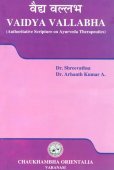Latika, Laṭikā, Lāṭikā, Latikā: 14 definitions
Introduction:
Latika means something in Hinduism, Sanskrit, Marathi, Hindi. If you want to know the exact meaning, history, etymology or English translation of this term then check out the descriptions on this page. Add your comment or reference to a book if you want to contribute to this summary article.
In Hinduism
Natyashastra (theatrics and dramaturgy)
Source: Wisdom Library: Nāṭya-śāstraLāṭikā (लाटिका) or Lāṭī refers to one of the types of Rīti (‘style’ or ‘essence’ of poetry) according to Viśvanātha Kavirāja (Sāhityadarpaṇa IX.1-2) and Bhoja (Sarasvatīkaṇṭhābharaṇa).

Natyashastra (नाट्यशास्त्र, nāṭyaśāstra) refers to both the ancient Indian tradition (shastra) of performing arts, (natya—theatrics, drama, dance, music), as well as the name of a Sanskrit work dealing with these subjects. It also teaches the rules for composing Dramatic plays (nataka), construction and performance of Theater, and Poetic works (kavya).
Yoga (school of philosophy)
Source: ORA: Amanaska (king of all yogas): A Critical Edition and Annotated Translation by Jason BirchLatikā (लतिका) refers to a “vine”, according to the Haṭhapradīpikā of Svātmārāma: an influential 15th-century Sanskrit manual on Hatha-Yoga dealing with techniques to channel one’s vital energy.—Accordingly, “All methods of Haṭha and Layayogas are for the attainment of Rājayoga. The man who has ascended to Rājayoga cheats death. The highest reality is the seed, Haṭhayoga the field and detachment the water. Because of [these] three, the no-mind state, which is the wish-fulfilling vine (unmanī-kalpa-latikā), immediately shoots forth”.

Yoga is originally considered a branch of Hindu philosophy (astika), but both ancient and modern Yoga combine the physical, mental and spiritual. Yoga teaches various physical techniques also known as āsanas (postures), used for various purposes (eg., meditation, contemplation, relaxation).
Languages of India and abroad
Marathi-English dictionary
Source: DDSA: The Molesworth Marathi and English Dictionarylaṭikā (लटिका) [or लटीक, laṭīka].—a (Esp. in poetry.) False &c. See laṭakā.
Source: DDSA: The Aryabhusan school dictionary, Marathi-Englishlaṭikā (लटिका).—a False.
Marathi is an Indo-European language having over 70 million native speakers people in (predominantly) Maharashtra India. Marathi, like many other Indo-Aryan languages, evolved from early forms of Prakrit, which itself is a subset of Sanskrit, one of the most ancient languages of the world.
Sanskrit dictionary
Source: DDSA: The practical Sanskrit-English dictionaryLatikā (लतिका).—
1) A small creeper; हा कष्टं ललिता लवङ्गलतिका दावाग्निना दह्यते (hā kaṣṭaṃ lalitā lavaṅgalatikā dāvāgninā dahyate) Bv.1.56.
2) A string of pearls.
--- OR ---
Lāṭikā (लाटिका).—
1) A particular style of composition; see S. D.629.
2) Name of a Prākṛta dialect; see Kāv.1.35.
See also (synonyms): lāṭī.
Source: Cologne Digital Sanskrit Dictionaries: Edgerton Buddhist Hybrid Sanskrit DictionaryLaṭikā (लटिका).—[, app. misprint for latikā (so Index): Mahāvyutpatti 433 = Tibetan khri śiṅ, creeper; but Mironov prapāṭikā, q.v.]
Source: Cologne Digital Sanskrit Dictionaries: Shabda-Sagara Sanskrit-English DictionaryLatikā (लतिका).—f.
(-kā) A twining plant. E. latā the same, kan aff., fem. form.
Source: Cologne Digital Sanskrit Dictionaries: Benfey Sanskrit-English DictionaryLatikā (लतिका).—i. e. lata + ka, f. A creeper.
Source: Cologne Digital Sanskrit Dictionaries: Cappeller Sanskrit-English DictionaryLatikā (लतिका).—[feminine] a small creeper or winding plant.
Source: Cologne Digital Sanskrit Dictionaries: Monier-Williams Sanskrit-English Dictionary1) Latikā (लतिका):—[from latā] f. a delicate or slender creeper or small winding tendril (to which the graceful curve of a slim figure is compared), [Kāvya literature; Kāmandakīya-nītisāra]
2) [v.s. ...] a string of pearls, [Sāhitya-darpaṇa]
3) Lāṭikā (लाटिका):—[from lāṭaka > lāṭa] f. (with or [scilicet] rīti) = lāṭī, [Sāhitya-darpaṇa]
Source: Cologne Digital Sanskrit Dictionaries: Yates Sanskrit-English DictionaryLatikā (लतिका):—(kā) 3. f. A twining plant.
[Sanskrit to German]
Sanskrit, also spelled संस्कृतम् (saṃskṛtam), is an ancient language of India commonly seen as the grandmother of the Indo-European language family (even English!). Closely allied with Prakrit and Pali, Sanskrit is more exhaustive in both grammar and terms and has the most extensive collection of literature in the world, greatly surpassing its sister-languages Greek and Latin.
Hindi dictionary
Source: DDSA: A practical Hindi-English dictionaryLatikā (लतिका):—(nf) a creeper, vine.
...
See also (Relevant definitions)
Starts with: Latikagriha, Latikamta, Latikaram, Latikarum, Latikavada.
Ends with (+33): Alatika, Amritalatika, Anandalatika, Anangalatika, Angulatika, Bahulatika, Bhandiralatika, Bhasmalalatika, Bilvamangalatika, Buhulatika, Cutalatika, Dandalatika, Dhatukalpalatika, Dorlatika, Drakshalatika, Haribhaktikalpalatika, Jalatika, Kalpalatika, Kanakalatika, Karnalatika.
Full-text (+26): Karnalatika, Amritalatika, Picchalatika, Lati, Kalpalatika, Dorlatikabhima, Dorlatikadarshaniya, Prapatika, Anangalatika, Romalata, Bahulatika, Kanakalata, Vijnanalatika, Ramapancadashikalpalatika, Riti, Haribhaktikalpalatika, Kanakalatika, Mrinalavalli, Saubhagyalatikapaddhati, Shyamakalpalatika.
Relevant text
Search found 16 books and stories containing Latika, Laṭikā, Lāṭikā, Latikā, Latikaa; (plurals include: Latikas, Laṭikās, Lāṭikās, Latikās, Latikaas). You can also click to the full overview containing English textual excerpts. Below are direct links for the most relevant articles:
A History of Indian Philosophy Volume 2 (by Surendranath Dasgupta)
Part 29 - Madhusūdana Sarasvatī (a.d. 1500) < [Chapter XI - The Śaṅkara School of Vedānta (continued)]
Part 8 - Maṇḍana, Sureśvara and Viśvarūpa < [Chapter XI - The Śaṅkara School of Vedānta (continued)]
Malatimadhava (study) (by Jintu Moni Dutta)
Part 3.1-2 - Definition of Rīti (the mode of arranging words) < [Chapter 2 - Literary Study of the Mālatīmādhava]
Garga Samhita (English) (by Danavir Goswami)
Verse 5.17.24 < [Chapter 17 - The Gopis Describe Their Remembrance of Sri Krsna]
Verse 2.25.9 < [Chapter 25 - The Rāsa-dance Pastime]
Verse 4.6.14 < [Chapter 6 - The Story of the Ayodhyā Women]
Hari-bhakti-kalpa-latikā (by Sarasvati Thkura)
Chaitanya Bhagavata (by Bhumipati Dāsa)
Verse 3.6.137 < [Chapter 6 - The Glories of Śrī Nityānanda Prabhu]
Verse 3.9.137-138 < [Chapter 9 - The Glories of Advaita]
Verse 3.7.86 < [Chapter 7 - Pastimes in Śrī Gadādhara’s Garden]
The backdrop of the Srikanthacarita and the Mankhakosa (by Dhrubajit Sarma)
Part 8a - Countries and cities (found in the Śrīkaṇṭhacarita) < [Chapter IV - Socio-cultural study of the Śrīkaṇṭhacarita]
Part 1 - Rīti or the style < [Chapter III - Literary Assessment Of The Śrīkaṇṭhacarita]
Related products
